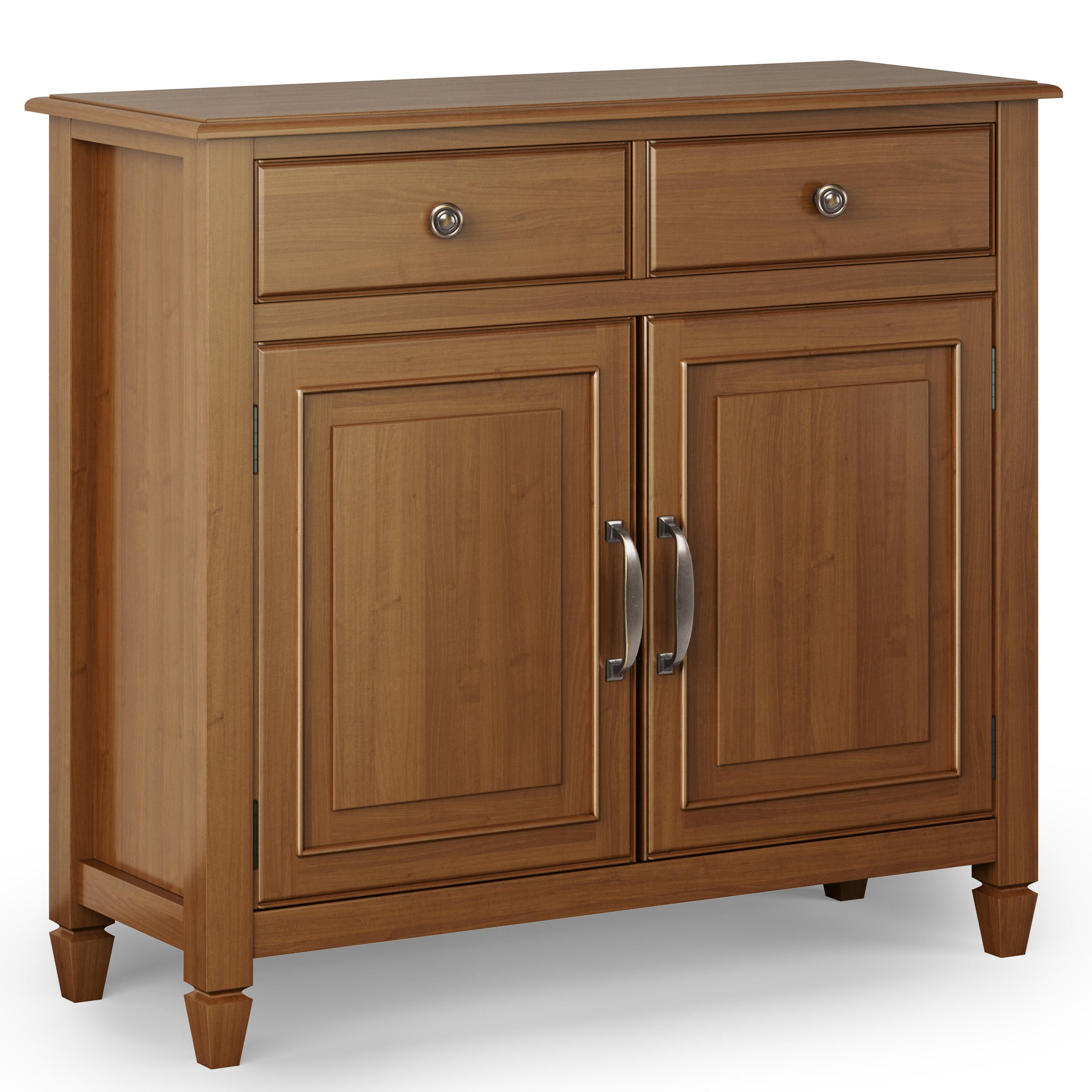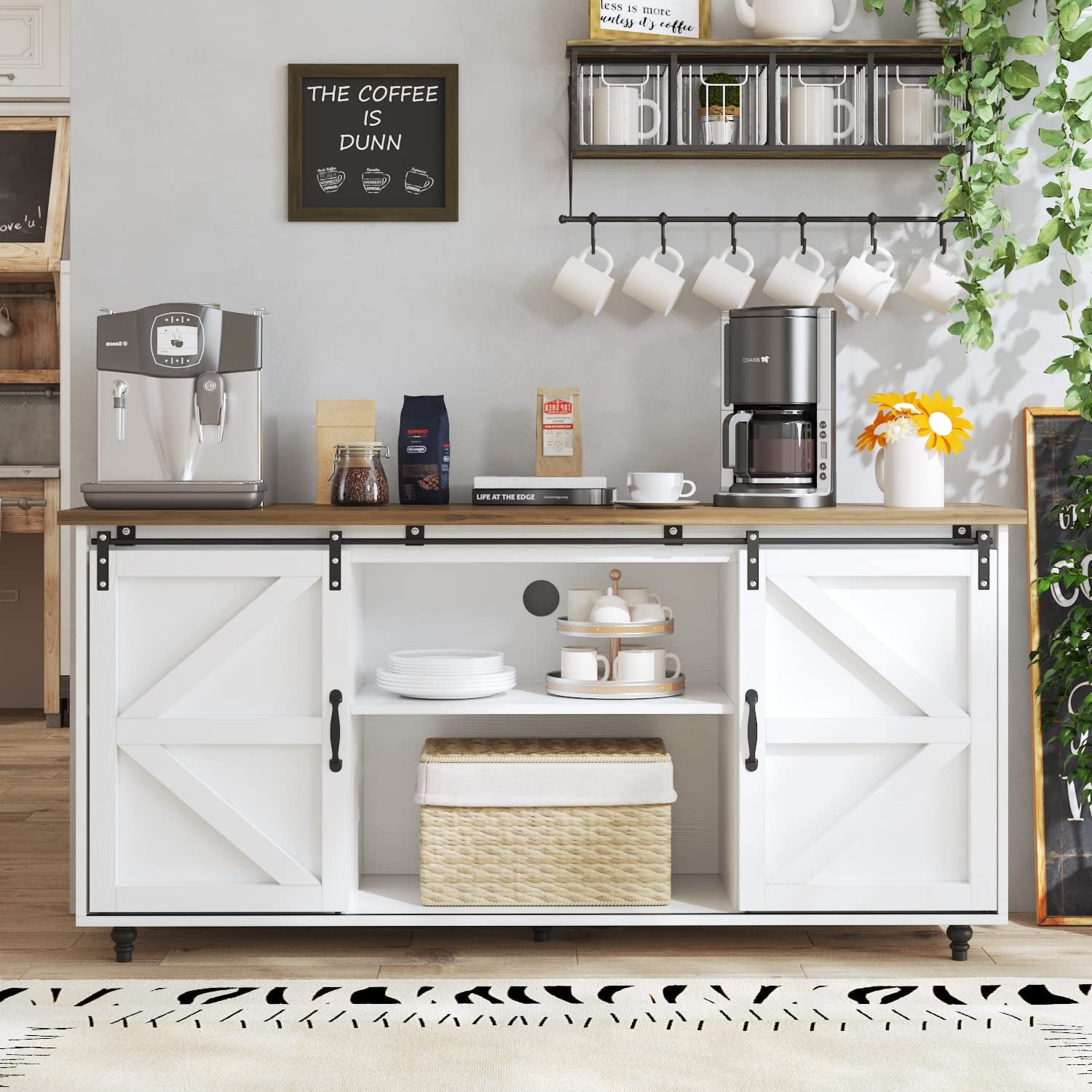Types of White Wood Sideboard Cabinets

White wood sideboard cabinets are a versatile and stylish addition to any home, offering ample storage space and a touch of elegance. They come in a variety of styles, each with its own unique characteristics and design elements.
Traditional White Wood Sideboard Cabinets
Traditional white wood sideboard cabinets are characterized by their classic and timeless designs. They often feature intricate carvings, ornate hardware, and a warm, inviting aesthetic. These cabinets are perfect for creating a formal and sophisticated atmosphere in a living room, dining room, or entryway.
Examples of traditional white wood sideboard cabinets include those with Queen Anne legs, Chippendale designs, or French Provincial styles.
Modern White Wood Sideboard Cabinets
Modern white wood sideboard cabinets prioritize clean lines, minimalist designs, and a focus on functionality. They often feature sleek hardware, geometric shapes, and a contemporary aesthetic. These cabinets are ideal for creating a modern and stylish look in a living room, dining room, or home office.
Examples of modern white wood sideboard cabinets include those with a Scandinavian design, mid-century modern influences, or contemporary minimalist styles.
Farmhouse White Wood Sideboard Cabinets
Farmhouse white wood sideboard cabinets embrace a rustic and charming aesthetic. They often feature distressed finishes, reclaimed wood elements, and simple, functional designs. These cabinets are perfect for creating a cozy and welcoming atmosphere in a farmhouse, cottage, or country-style home.
Examples of farmhouse white wood sideboard cabinets include those with shaker-style doors, X-shaped legs, or a distressed white paint finish.
Contemporary White Wood Sideboard Cabinets
Contemporary white wood sideboard cabinets blend modern and traditional elements, creating a sophisticated and stylish look. They often feature sleek lines, clean designs, and a touch of elegance. These cabinets are perfect for creating a contemporary and stylish atmosphere in a living room, dining room, or entryway.
Examples of contemporary white wood sideboard cabinets include those with a combination of modern and traditional elements, such as a sleek design with intricate carvings or a minimalist style with a touch of ornamentation.
Features and Functionality

White wood sideboard cabinets are designed to be both aesthetically pleasing and functionally versatile, offering a range of features to accommodate diverse storage needs. The common features include drawers, shelves, doors, and hardware, each contributing to the overall purpose of the cabinet.
Drawers
Drawers are a primary feature of sideboard cabinets, providing convenient storage for various items. They are typically located below the countertop and are accessed by sliding them open and closed.
Drawers can be made of different materials, such as wood, metal, or plastic. The material choice influences the drawer’s durability, appearance, and cost. For instance, wooden drawers offer a classic look and are often used in traditional sideboards. Metal drawers, on the other hand, are known for their durability and are commonly found in modern sideboards.
- Types of Drawers: Sideboard cabinets may have various drawer configurations, including:
- Full-extension drawers: These drawers extend fully, allowing for easy access to the entire contents. They are ideal for storing larger items or for those who need to see everything at once.
- Soft-close drawers: These drawers close smoothly and quietly, preventing slamming and potential damage. They are particularly beneficial in kitchens or dining rooms where noise is a concern.
- Dovetail drawers: This type of drawer construction uses interlocking joints, creating a strong and durable connection. Dovetail drawers are often considered a premium feature, adding to the overall quality and longevity of the sideboard.
- Drawer Size and Number: The number and size of drawers vary depending on the sideboard’s design and intended use. Smaller sideboards may have two or three drawers, while larger ones can have six or more. The size of each drawer is determined by the type of items being stored. For example, a silverware drawer might be smaller than a drawer intended for linens or serving dishes.
- Drawer Dividers: Some sideboards come with drawer dividers, which can be used to organize and separate items within the drawer. This helps to keep items from becoming mixed up and makes it easier to find what you need.
Shelves
Shelves provide open storage space within the sideboard, offering flexibility in accommodating various items. They are often located above the drawers and can be accessed by opening doors or sliding panels.
- Types of Shelves:
- Fixed shelves: These shelves are permanently attached to the cabinet and cannot be adjusted. They are typically found in traditional sideboards and provide a stable platform for displaying items.
- Adjustable shelves: These shelves can be moved to different heights, allowing for customized storage solutions. They are commonly found in modern sideboards and are ideal for accommodating items of varying sizes.
- Pull-out shelves: These shelves are designed to slide out, making it easier to access items stored at the back. They are particularly useful for storing heavier items or for those who have difficulty reaching into the cabinet.
- Shelf Material: Shelves are often made of wood, glass, or metal. Wooden shelves provide a classic look and are durable, while glass shelves offer a modern aesthetic and allow for displaying items. Metal shelves are typically used in contemporary sideboards and are known for their strength and durability.
- Shelf Weight Capacity: The weight capacity of shelves varies depending on the material and construction. It is important to consider the weight of the items being stored when selecting a sideboard to ensure the shelves can handle the load.
Doors
Doors provide enclosed storage space within the sideboard, protecting items from dust, dirt, and damage. They can be designed in various styles, such as sliding, hinged, or French doors.
- Types of Doors:
- Hinged doors: These doors are attached to the cabinet with hinges and open outward. They are the most common type of door used in sideboards and offer a traditional look.
- Sliding doors: These doors slide along a track, opening and closing horizontally. They are often found in modern sideboards and are ideal for saving space.
- French doors: These doors are made up of two panels that are hinged in the middle and open outward. They offer a sophisticated and elegant look and are commonly used in antique sideboards.
- Door Material: Doors are often made of wood, glass, or a combination of both. Wooden doors provide a classic look and are durable, while glass doors offer a modern aesthetic and allow for displaying items.
- Door Hardware: Doors typically have handles or knobs for opening and closing. The hardware can be made of various materials, such as metal, ceramic, or wood, and can be chosen to complement the sideboard’s style.
Hardware
Hardware refers to the various components that make up the functional aspects of the sideboard, including hinges, drawer slides, handles, knobs, and locks. The type of hardware used can influence the overall appearance, durability, and functionality of the cabinet.
- Hinges: Hinges are used to attach doors to the cabinet. They come in various styles, including concealed hinges, which are hidden from view, and surface-mounted hinges, which are visible. The choice of hinges depends on the style of the sideboard and the desired level of visibility.
- Drawer Slides: Drawer slides are used to allow drawers to open and close smoothly. They come in various types, including ball-bearing slides, which offer smooth and quiet operation, and side-mount slides, which are less expensive but may not be as durable.
- Handles and Knobs: Handles and knobs are used to open and close drawers and doors. They come in a wide variety of styles and materials, allowing for customization to match the sideboard’s aesthetic. The choice of handles and knobs should be based on the size and weight of the doors and drawers, as well as the overall style of the cabinet.
- Locks: Locks can be added to drawers and doors for security purposes. They are typically used to protect valuables or sensitive documents stored in the sideboard.
Materials and Construction: White Wood Sideboard Cabinet

The choice of wood and construction techniques significantly impact the durability, aesthetics, and overall quality of a white wood sideboard cabinet. Understanding the properties of different wood species and the intricacies of various construction methods allows for informed decisions regarding the cabinet’s design and functionality.
Wood Species
The selection of wood for a white wood sideboard cabinet is crucial, as it determines the cabinet’s appearance, durability, and overall character.
- Oak: Oak is a robust hardwood known for its strength, durability, and beautiful grain patterns. Its resistance to scratches and dents makes it ideal for high-traffic areas. Oak is also highly versatile, allowing for various finishes, from natural to painted, enhancing its aesthetic appeal.
- Maple: Maple is another hardwood prized for its strength and durability. Its close grain pattern and smooth texture make it an excellent choice for white wood cabinets, allowing for a crisp and elegant finish. Maple is also known for its resistance to moisture and temperature changes, making it suitable for various environments.
- Pine: Pine is a softwood known for its affordability and warm, natural color. Its knots and grain patterns add character and rustic charm to furniture. While pine is less durable than hardwoods, it is lightweight and easy to work with, making it suitable for cabinets that receive less wear and tear.
- Cherry: Cherry is a hardwood known for its rich reddish-brown color and beautiful grain patterns. It is a relatively soft wood, but it is still durable and resistant to scratches. Cherry is often used for high-end furniture due to its elegance and unique character.
Construction Techniques, White wood sideboard cabinet
The construction techniques used to build a white wood sideboard cabinet are essential for its stability, durability, and overall longevity.
- Dovetail Joints: Dovetail joints are a classic woodworking technique that creates a strong and visually appealing connection between two pieces of wood. The interlocking shape of the dovetails provides exceptional strength and prevents the joint from pulling apart. Dovetail joints are commonly used in high-quality furniture construction, including sideboard cabinets, as they enhance both the durability and aesthetic appeal.
- Mortise and Tenon Joints: Mortise and tenon joints are another traditional woodworking technique that creates a strong and secure connection between two pieces of wood. A mortise is a rectangular hole cut into one piece of wood, while a tenon is a projection that fits into the mortise. The mortise and tenon joint is a robust and durable connection, often used in furniture construction to ensure stability and longevity.
- Glue Construction: Glue construction is a common technique used to join wood pieces together. High-quality wood glue provides a strong and durable bond, ensuring the stability and integrity of the cabinet. Glue construction is often used in conjunction with other joinery techniques, such as dovetail or mortise and tenon joints, to create a robust and lasting connection.
A white wood sideboard cabinet can be a versatile addition to any room, offering ample storage space and a clean aesthetic. When considering a smaller space, such as a bedroom, the concept of a small entertainment center for bedroom can be integrated into the design of a sideboard cabinet.
This allows for a dedicated space for electronics and media while maintaining a cohesive and functional storage solution within the bedroom.
A white wood sideboard cabinet can be a versatile addition to any room, but in a small bedroom, maximizing space is key. To make the most of limited square footage, consider implementing some hacks for small bedrooms , such as utilizing vertical space and opting for multi-functional furniture.
A white wood sideboard cabinet can serve as both a storage solution and a stylish display surface, effectively enhancing the functionality of a small bedroom.
